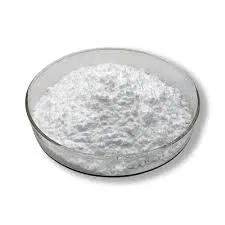
Δεκ . 01, 2024 10:26 Back to list
hpmc for gypsum plaster
The Application of HPMC in Gypsum Plaster
Hydroxypropyl Methylcellulose (HPMC) has gained significant attention in the construction industry, particularly in the formulation of gypsum plaster. This versatile cellulose ether is widely recognized for its thickening, binding, and film-forming properties, making it an essential component in modern building materials. The combination of HPMC with gypsum plaster not only enhances the performance of the plaster but also improves its handling and application characteristics.
Understanding Gypsum Plaster
Gypsum plaster is a widely used material in construction, primarily due to its effective setting properties, fire resistance, and environmentally friendly characteristics. It is composed of gypsum powder, which is mixed with water to form a paste that can be easily applied to surfaces such as walls and ceilings. Once the water evaporates, the plaster hardens, creating a smooth and aesthetically pleasing finish. However, to maximize its utility, additives such as HPMC are incorporated into gypsum plaster formulations.
Benefits of HPMC in Gypsum Plaster
1. Enhanced Workability One of the primary advantages of adding HPMC to gypsum plaster is the improvement in workability. HPMC enhances the flow and consistency of the plaster, allowing for easier application and spreading. This property is particularly beneficial when working on large surfaces or when intricate detailing is required.
2. Extended Open Time HPMC contributes to the open time of gypsum plaster, which is crucial when working in warm environments. A longer open time allows applicators to work at a more leisurely pace without worrying about the plaster setting too quickly. This is particularly advantageous for complex projects that require precise detail and perfect finishing.
hpmc for gypsum plaster

3. Water Retention One of the standout features of HPMC is its excellent water retention capability. By employing HPMC, gypsum plaster can retain moisture for a more extended period during the setting process. This property minimizes the risk of premature drying, which can lead to cracking and reduced bond strength. A well-hydrated plaster sets more reliably and adheres better to surfaces.
4. Improved Adhesion The binding characteristics of HPMC ensure that gypsum plaster adheres more effectively to various substrates, including concrete, masonry, and drywall. This is particularly important in ensuring that the finished plaster remains intact and durable over time.
5. Increased Durability Gypsum plaster modified with HPMC exhibits greater resistance to cracking and shrinkage, resulting in a more durable finish. The long-term performance of plastering systems is significantly enhanced, making it a preferred choice among builders and architects.
6. Versatile Application HPMC allows for the customization of gypsum plaster formulations to meet the specific requirements of different projects. Whether for interior walls, ceilings, or external applications, HPMC can be adjusted to modify properties such as viscosity, consistency, and drying time.
Conclusion
Incorporating HPMC into gypsum plaster formulations has revolutionized the construction industry. The benefits of improved workability, extended open time, water retention, enhanced adhesion, and increased durability make it an invaluable additive. With the ever-evolving requirements of modern architecture, the use of HPMC in gypsum plaster continues to gain traction, offering both builders and consumers a reliable, high-performance solution for a variety of applications. As construction practices advance, the role of HPMC is likely to expand, contributing to the development of even more innovative and efficient building materials.
-
Versatile Hpmc Uses in Different Industries
NewsJun.19,2025
-
Redispersible Powder's Role in Enhancing Durability of Construction Products
NewsJun.19,2025
-
Hydroxyethyl Cellulose Applications Driving Green Industrial Processes
NewsJun.19,2025
-
Exploring Different Redispersible Polymer Powder
NewsJun.19,2025
-
Choosing the Right Mortar Bonding Agent
NewsJun.19,2025
-
Applications and Significance of China Hpmc in Modern Industries
NewsJun.19,2025







